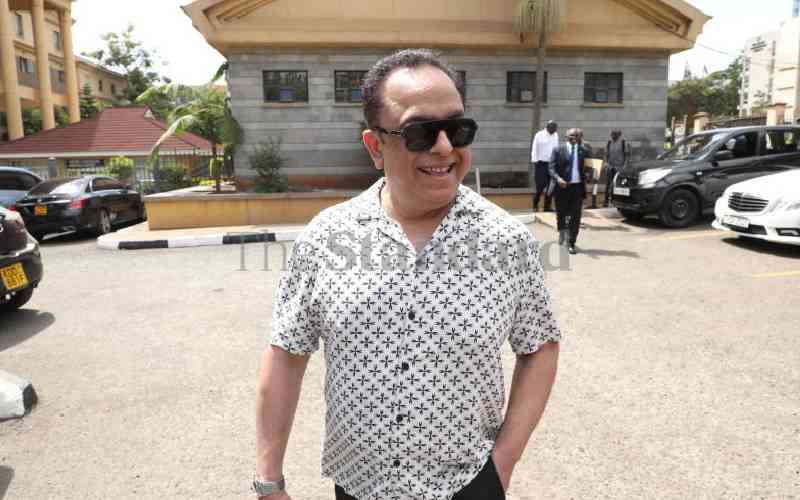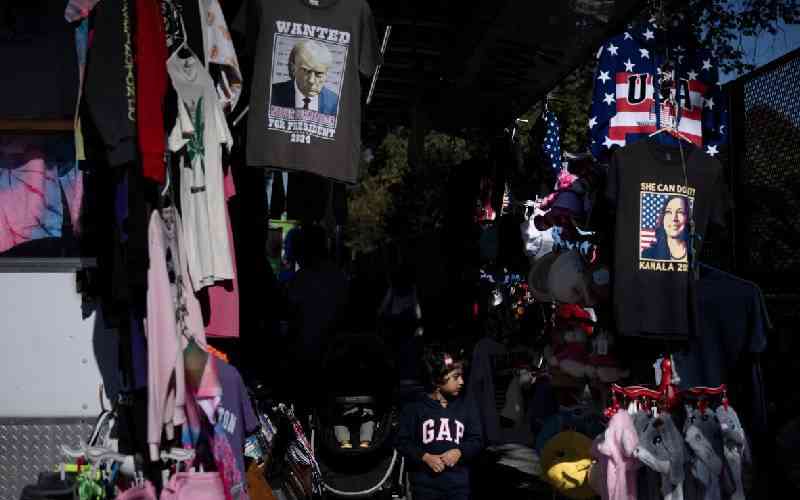By Amos Kareithi
He was the custodian of the fingerprints of all known criminals in the country. His word on the identity of fingerprint was final and could free or lead to the jailing of a suspected criminal.
Raphael Daudi Musau is a celebrated professional in fingerprints knowledge but is little known outside the detective circles. He unravelled the mystery of the unidentified body dumped in a desolate thicket deep in the Hyena infested Ngong Forest in March, 1975.
 |
Musau demonstrates how to dust for fingerprints. Photos/ Saidi Hamisi/ Standard |
He also trained at United Kingdom’s Glascow Finger Print Bureau, where the trainers realised Musau was an expert. Interestingly, they instead gave him a class to teach for six months.
"When they realised that I was well versed in the field, they turned me into a trainer. I taught students from Jamaica, South Africa and Britain for six months," says Musau. He later proceeded to Scotland Yard for further training in scene of crime management for six months. With this qualification, he became a detective.
In 1978, he was transferred from the CID and instructed to establish the National Fingerprint Registration Bureau, which oversaw the issuance of IDs in the country. As head of the bureau, he recruited 6,000 registration clerks and 500 finger print technicians.
It is as a result of this exercise that Kenya was ranked second after USA as the country with the biggest fingerprints bank. The FBI has about 200 million fingerprint entries in the bank while Kenya has about 20 million. With his knowledge, Musau is pained by the fact that thousands of Kenyans are buried as unidentified and unclaimed yet there is a foolproof method of identifying them.
"After accidents some of the victims are taken to hospitals where they stay for days in a coma before dying. Why can’t the hospitals take their fingerprints and refer them to the National Registration Fingerprints Bureau?" asks Musau.
The police, Musau says, are afraid of taking fingerprints of dead bodies in mortuaries and that is why the unclaimed are referred to as unidentified.
Power of fingerprints
Abruptly, Musau interrupts the interview, produces his national identity card, which he scrutinises as he thumbs a dark smudge at the corner of the document and smiles. "This is all the identity you need. With a fingerprint, you can never go wrong. Not even the 10 fingers of my hands are identical. These fingerprints started developing when I was only four months old in my mother’s womb," he says.
He explains that no two people in the whole world share identical fingerprints adding that even the prints of each of the fingers of the same person have distinct characteristics. There are different types of chemicals used to develop latent prints deposited on different surfaces such as plastic, walls and papers.
Stay informed. Subscribe to our newsletter
"Once a crime is committed, a thief is always in a hurry and will leave a trace behind, however careful he is. Even after death, prints last for years. Even if a criminal peels off his fingers after a crime, it will only take three weeks for the skin and the finger prints to develop again," he explains.
Musau says if banks were to adopt fingerprints as a mode of identification, they would avoid losing the millions being stolen by fraudsters and forgers.
"Every time you write a withdrawal form or write a cheque, you deposit your prints there. In case the transaction is illegal, we can always trace the culprit," he says. "We have also been telling hospitals to take the fingerprints of all babies born in their wards. This way, there will be a record of even those Kenyans who are below 18 years," he advices.
Musau explains that besides fingerprints, palm, shoe soles and footprints can also be used to identify an individual.
 The Standard Group Plc is a
multi-media organization with investments in media platforms spanning newspaper
print operations, television, radio broadcasting, digital and online services. The
Standard Group is recognized as a leading multi-media house in Kenya with a key
influence in matters of national and international interest.
The Standard Group Plc is a
multi-media organization with investments in media platforms spanning newspaper
print operations, television, radio broadcasting, digital and online services. The
Standard Group is recognized as a leading multi-media house in Kenya with a key
influence in matters of national and international interest.
 The Standard Group Plc is a
multi-media organization with investments in media platforms spanning newspaper
print operations, television, radio broadcasting, digital and online services. The
Standard Group is recognized as a leading multi-media house in Kenya with a key
influence in matters of national and international interest.
The Standard Group Plc is a
multi-media organization with investments in media platforms spanning newspaper
print operations, television, radio broadcasting, digital and online services. The
Standard Group is recognized as a leading multi-media house in Kenya with a key
influence in matters of national and international interest.







